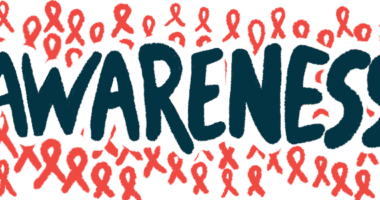Chronic hepatitis B undertreated globally, real-world study finds
Treatment rates found especially low among women, Asians living in West

Global rates for evaluating chronic hepatitis B and starting appropriate treatment are lower than they should be, especially among women and Asian minorities living in Western countries.
These are the findings of a multinational real-world study, “Sex and ethnic disparities in hepatitis B evaluation and treatment across the world,” which was published in the Journal of Hepatology.
Addressing these disparities — and adopting targeted outreach approaches to reduce infection and complication rates in these overlooked populations — will be critical for meeting the World Health Organization’s goal to eliminate viral hepatitis as a public health threat worldwide by 2030, according to the researchers.
“Rates of treatment evaluation and initiation remain below optimal levels,” Mindie H. Nguyen, MD, the study’s senior author, from the Stanford University Medical Center and Department of Epidemiology and Population Health, said in a press release from Elsevier, publisher of the journal, which is devoted to liver diseases.
“It is vitally important to understand what the continual barriers are to treatment for” chronic hepatitis B, Nguyen added.
Hepatitis, referring to inflammation of the liver, is most commonly caused by viral infections. Hepatitis B, the most common type of liver infection globally, is caused by the hepatitis B virus (HBV), which is spread via contact with infected blood or other bodily fluids.
Chronic hepatitis B thought to affect about 300M people globally
An estimated 300 million people worldwide are believed to have long-lasting, or chronic, HBV infection, which can drive more serious liver problems such as cirrhosis — irreversible liver scarring and damage — liver cancer, or liver failure.
Hepatitis B accounts for most liver disease-related fatalities worldwide. In 2019, an estimated 555,000 deaths globally could be attributed to HBV infections, the release states.
While a vaccine to prevent HBV infection is available, and there also are effective oral antiviral therapies to help clear an active infection, the global hepatitis B burden remains high.
“In clinical practice we continue to see patients with advanced liver disease due to HBV. Simplifying and broadening HBV management is crucial,” the researchers stated in the release.
The scientists noted that, while some studies on evaluation and treatment rates had been done in the U.S., there are limited estimates available for diagnosing and treating chronic hepatitis B in other parts of the world. Gaining a better understanding of hepatitis B testing, evaluation, and treatment patterns across different populations can help in finding the best way to tackle the issue, the team noted.
Now, Nguyen and colleagues across several countries examined data from 12,566 adults with chronic hepatitis B who had not yet received treatment for the infection. These patients were seen at clinics involved in the REAL-B consortium, a collaborative effort involving 25 centers across nine countries that treat people with HBV infections.
The patients had a mean age of 47.1 and about 42% were women. Most participants (96%) were Asian, nearly half lived in Western regions, and a minority (8.7%) already had cirrhosis.
About three-quarters of patients received an adequate evaluation at their healthcare center, meaning they underwent appropriate tests to look at HBV infection and treatment eligibility.
The fact that more than a quarter of patients were not adequately assessed is “a worrying figure,” the researchers wrote, especially because the study involved mainly specialized and well-trained treatment centers.
Of those who were adequately evaluated, one-third were considered treatment-eligible based on international guidelines. In that subset, 83% were started on antiviral therapies.
Treatment-eligible patients with cirrhosis were significantly more likely, by 50%, to receive antivirals than patients without it, but still, 1 in 10 of them did not get such treatment. The researchers called that “a highly concerning observation,” as cirrhosis leaves patients at risk for life-threatening liver complications.
Significant sex, ethnic disparities found in HBV evaluation, treatment
The team also found significant sex and ethnic disparities in the evaluation and treatment of chronic hepatitis B. While female patients were more likely than male patients to have an adequate evaluation, they were about 45% less likely to start treatment when it was deemed medically appropriate.
As one possible explanation, the scientists suggested that “many younger women may not wish to take up treatment due to family planning concerns and the fear of the adverse effects of antiviral medications on [an] unborn child.”
The lowest evaluation and treatment rates were observed in Asian patients from Western regions. Specifically, those patients were about 40%-50% less likely to undergo appropriate evaluations or start on antiviral treatments compared with Asian patients from the East.
“Our research leads us to speculate that there may be additional barriers for Asian patients in the West, including language and cultural factors, in addition to other socioeconomic factors,” Nguyen said.
The large number of Asian patients involved in the study reflects the fact that the highest hepatitis B burden globally is seen “in the Western Pacific region and among immigrants from this region who are now residing in the West,” Nguyen added.
Our research leads us to speculate that there may be additional barriers for Asian patients in the West, including language and cultural factors, in addition to other socioeconomic factors.
Nguyen noted that, in a population-based study in the U.S., “the highest prevalence of HBV infection was observed in the Asian population (3.4%) followed by the Black population (0.69%).”
The scientist called for more research, both in other geographical regions and among different racial and ethnic populations.
“Additional studies are needed to evaluate our study’s outcomes in other racial and ethnic groups that may be disproportionately affected by HBV, such as those from the Africa region,” Nguyen said.



